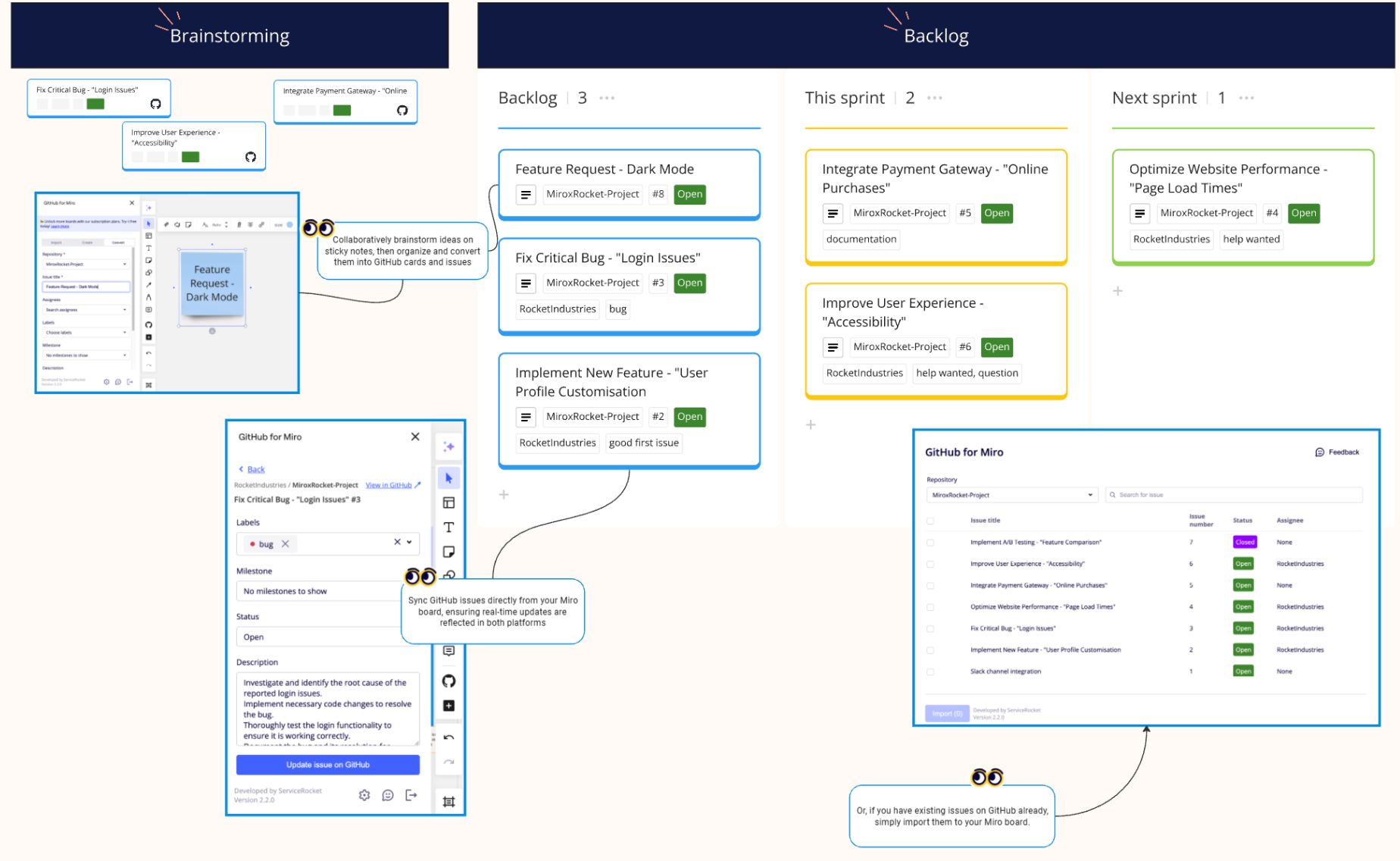Backlog planning
What is backlog planning?
The backlog is a list of all work items (features, bugs, tasks) that need to be done for a product. Refinement involves breaking down large items into smaller, more manageable tasks and estimating their effort.
Connect GitHub and Miro effortlessly. Import or create Github issues, or turn Miro stickies into GitHub tasks for smoother, smarter collaboration!
Overview
You can use this template to streamline backlog planning by integrating Miro with GitHub, turning brainstorming ideas into actionable tasks, categorizing them by priority, and syncing updates in real-time —all without the need to switch platforms
Brainstorm ideas
Use sticky notes on your Miro board to jot down any ideas or problems that need to be addressed.
Utilize dot voting or polling features to gauge team consensus on which items should be prioritized.
Drag relevant ideas from brainstorming sessions into your product roadmap for a clearer picture of what’s next.
Create and prioritize tasks
Use the GitHub for Miro app to instantly turn sticky notes from brainstorming sessions into GitHub issues or Miro cards for your backlog.
Drag issues from your product roadmap and categorize them based on urgency and importance, deciding whether to address them now or in future sprints.
Sync real-time with Github
Break down larger items into smaller, more manageable tasks and estimate their effort for more effective backlog management.
Sync your Miro board with GitHub issues, ensuring that your tasks are always up-to-date and aligned across platforms.
Edit descriptions, milestones, and other fields within Miro to keep your tasks accurate.
Who should be involved?
Backlog planning is typically done by a team of product managers, scrum masters, and development teams rather than a single person. This ensures that all relevant perspectives are considered and that the plan is aligned with the overall product development strategy.
Product managers
Responsible for defining the product vision, strategy, and roadmap.
Development teams
Development teams can contribute to the backlog refinement, estimate tasks and provide technical feedback.
Scrum masters
Facilitate backlog refinement sessions and ensure the team has a clear understanding of upcoming work.
Why use this template?
Through effective backlog planning, your team should streamline task management, ensure alignment with strategic priorities, and tailor your workflow to optimize efficiency and collaboration.
Streamlined Task Management:
Efficient backlog planning helps organize and manage all work items, from features to bugs, ensuring nothing is overlooked.
Improved Prioritization:
By categorizing tasks based on urgency and importance, your team can focus on high-priority items that align with strategic goals.
Seamless Integration with GitHub:
Syncing your Miro board with GitHub issues eliminates redundant work and keeps all stakeholders up-to-date with real-time status updates.
Enhanced Efficiency:
Using a consolidated board for managing issues and planning sprints saves time by reducing context-switching and integrating all necessary information in one place.
Step 1: Brainstorming
Brainstorming is a crucial step in tackling complex issues like enhancing user profile customization, refining the bug reporting process, or optimizing payment gateway integrations. It allows the team to generate innovative ideas collaboratively, helping break down large tasks into manageable actions. For instance, when considering ways to improve the onboarding flow, brainstorming sessions can reveal fresh perspectives on what first-time users find intuitive or challenging. Similarly, exploring ideas for implementing survey functionality within transactions can inspire unique ways to gather user feedback. By setting aside time to brainstorm each of these issues, teams can evaluate multiple solutions, outline potential challenges, and refine approaches before translating ideas into structured backlog items or GitHub-ready tasks. This collaborative process fuels a shared understanding and sets a clear direction for effective problem-solving. The video below has the steps showing this.
Step 2: Backlog definition and sprint movement
To manage our tasks effectively, we start by creating each issue in the backlog column of our Miro board. This allows us to capture high-priority items, such as fixing critical bugs, implementing user profile customization, integrating a payment gateway, and improving UX ability, in one central location for easy reference. By adding these issues to the backlog first, we can prioritize and discuss their requirements before assigning them to a specific sprint. Once each issue has been reviewed and scoped, it’s either moved to the “This Sprint” column for immediate attention or assigned to the “Next Sprint” column if it’s a future priority. This organized flow from backlog to sprint columns ensures our team remains focused on immediate tasks while maintaining visibility into upcoming work.

